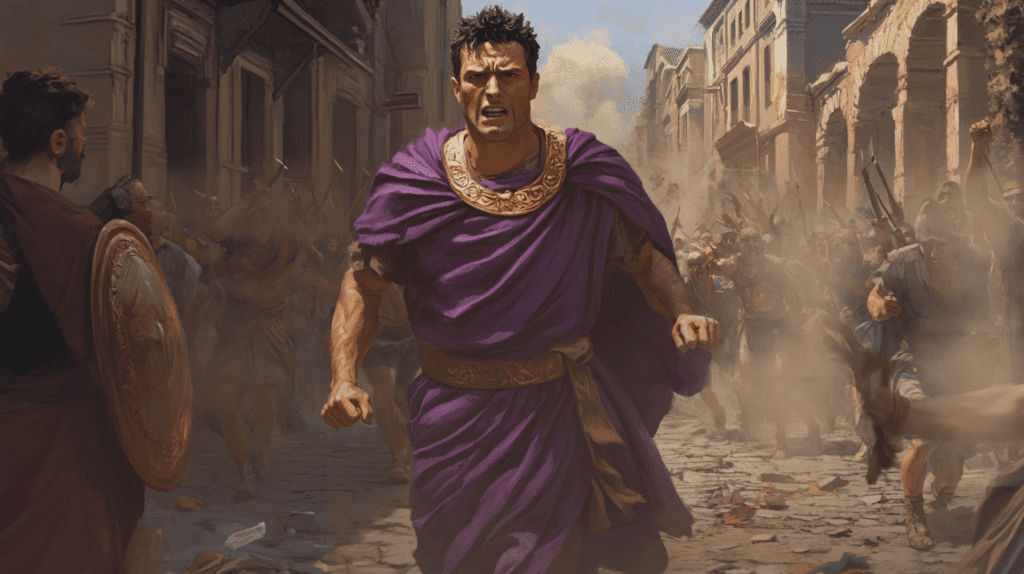
Background
In the mid-5th century, the Western Roman Empire was engulfed in political chaos. The assassination of Emperor Valentinian III in 455 AD paved the way for Petronius Maximus to ascend to the throne. To strengthen his position, Maximus married Valentinian’s widow, Licinia Eudoxia, and arranged for his son Palladius to wed Valentinian’s daughter, Eudocia.
However, Eudoxia, driven by a desire for revenge over her husband’s murder and discontent with Maximus’ takeover, allied with the Vandals. King Genseric of the Vandals, who had previously been allied with Valentinian through a betrothal between his son Huneric and Eudocia, seized this opportunity to break the peace treaty and launch an attack on Rome.
The Invasion
Genseric sailed from Carthage with his fleet and landed at Ostia, the port of Rome, in June 455 AD. Before advancing on the city, the Vandals cut off the aqueducts, depriving Rome of its water supply. As the Vandals approached, Emperor Maximus attempted to flee but was killed by a Roman mob outside the city. His death left Rome disorganised and defenseless.

Responding to the actions of Petronius Maximus, Gaiseric moved a large seaborne force from Carthage to Italy and sacked the city in a more thorough manner than even Alaric’s Goths had carried out in 410. Unlike Alaric, who besieged Rome as a roaming barbarian general, Gaiseric was the king of a flourishing polity and was therefore able to systematically conduct the sack.
Before Gaiseric marched upon Rome, Pope Leo I implored him not to destroy the ancient city or murder its inhabitants. Gaiseric agreed and the gates of Rome were thrown open to him and his men. Once inside the city, the invaders plundered it thoroughly, to the extent that Procopius noted how the Vandals had even stripped the gold from the ceiling of the Jupiter Capitolinus temple – but more significant was the capture of important figures and dignitaries in the city, whose return remained a bargaining point between the Vandals and the Empire for many years to come. Routine Vandal raids along the coast of Italy and the Mediterranean characterized the situation during the first years after Gaiseric’s successful seizure of Rome.

Overall, honoring their promise to the Pope the Vandals capture of Rome was relatively bloodless; they did, however, take huge amounts gold, silver and many other things of value and caused huge material damage. Gaiseric also took with him Empress Eudoxia and her daughters, Eudocia, and Placidia, as well as other hostages from Rome’s leading families. Across Italy, the shock of the Vandal sack of Rome and the ongoing presence of the Vandals paralyzed the imperial government. Eudocia married Gaiseric’s son Huneric after arriving in Carthage. That union produced Hilderic—Gaiseric’s grandson—who later played a critical role in Emperor Justinian’s sixth-century conquests of north Africa.
Aftermath
The sack of 455 AD was more destructive than the earlier Visigothic sack of 410 AD. While Genseric kept his promise not to burn the city, the Vandals caused significant damage and took many Romans back to North Africa as slaves. The term “vandalism” originates from this event, reflecting the extensive looting and destruction carried out by the Vandals. This event symbolized the weakening of the Western Roman Empire and foreshadowed its eventual fall. The sack of Rome by the Vandals remains a significant moment in history, illustrating the vulnerability and decline of what was once the most powerful city in the world.





